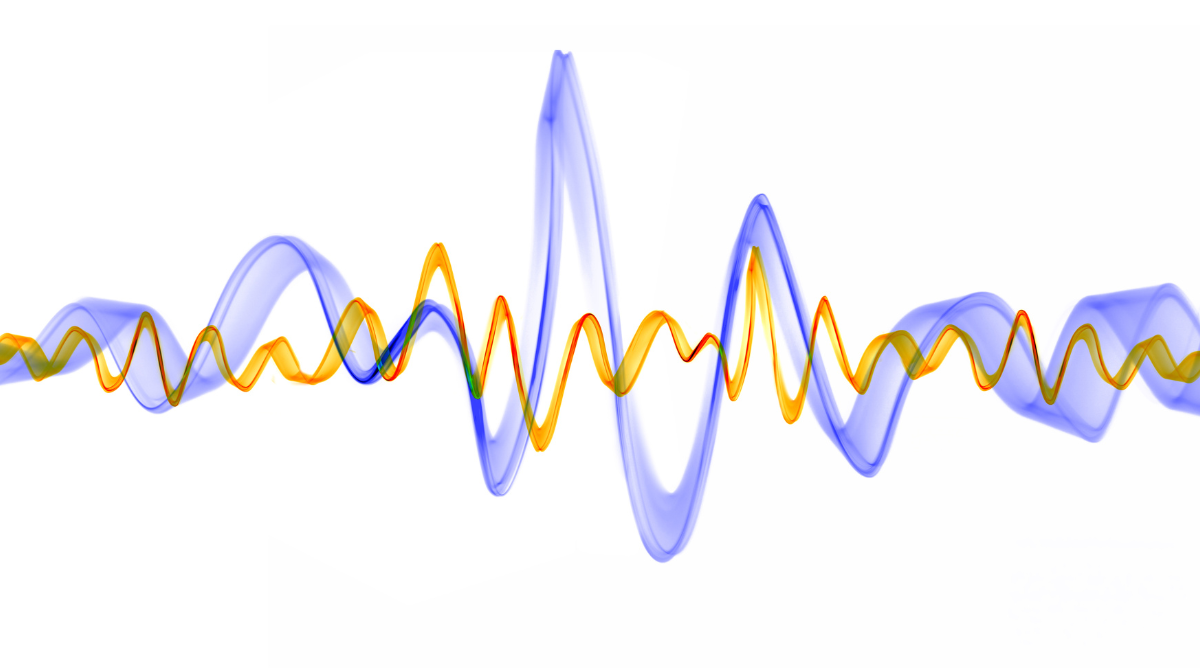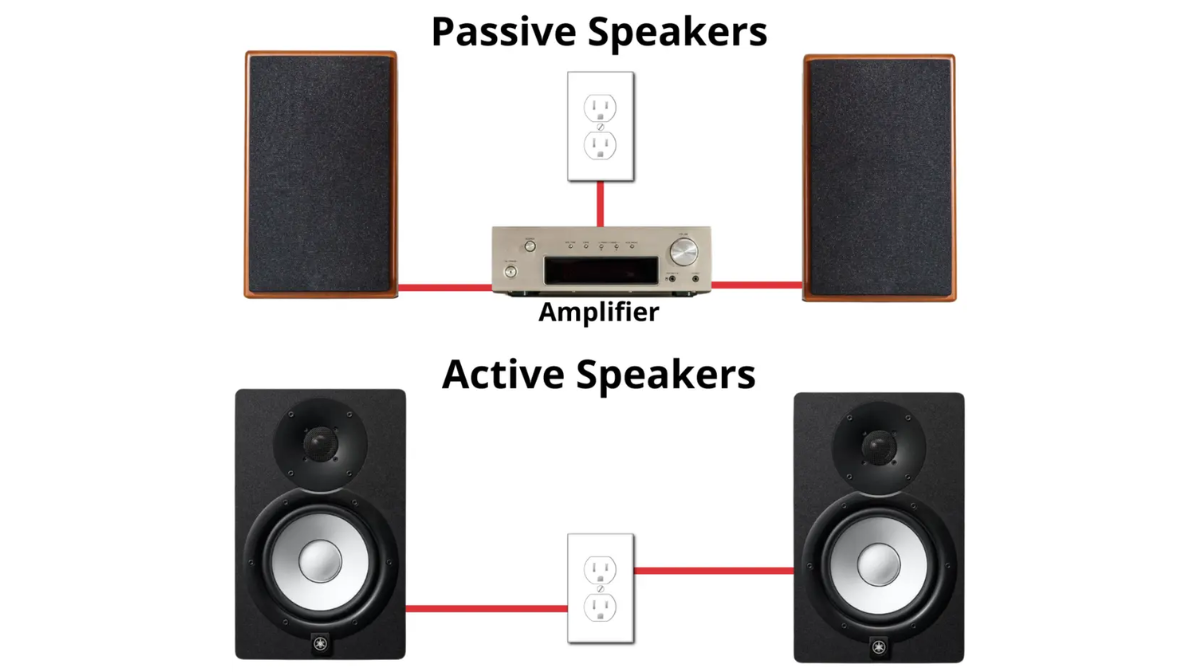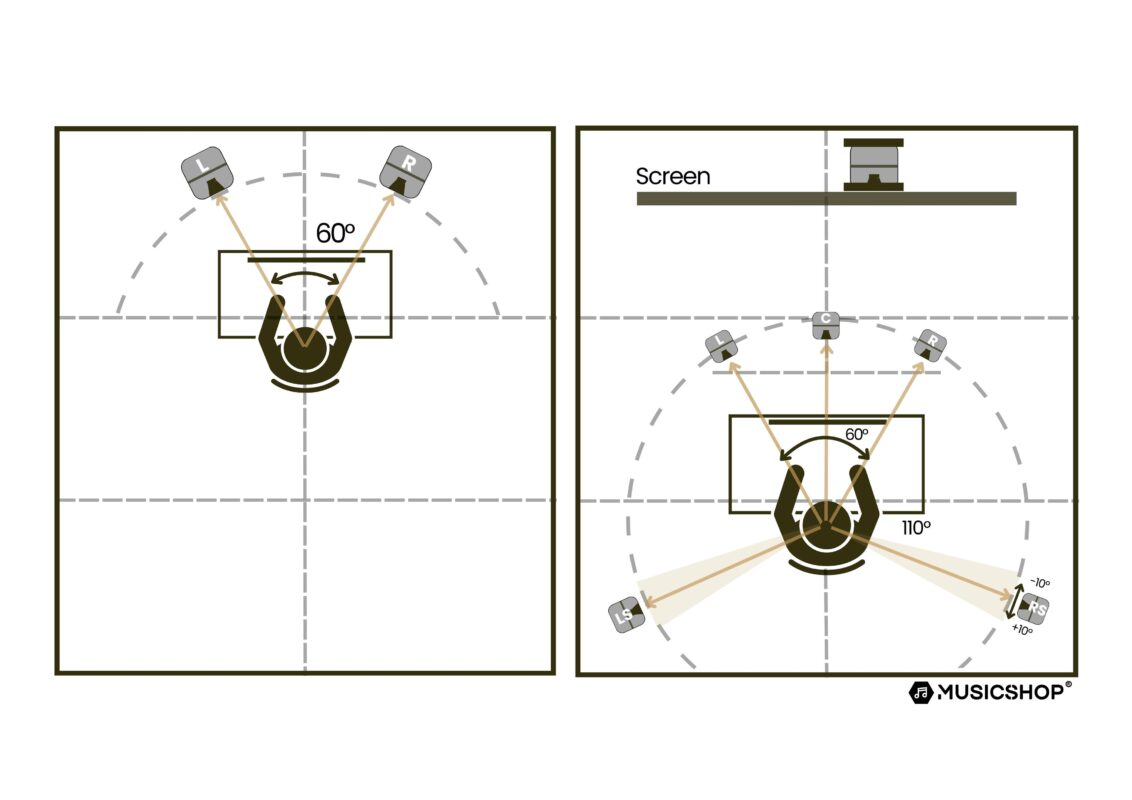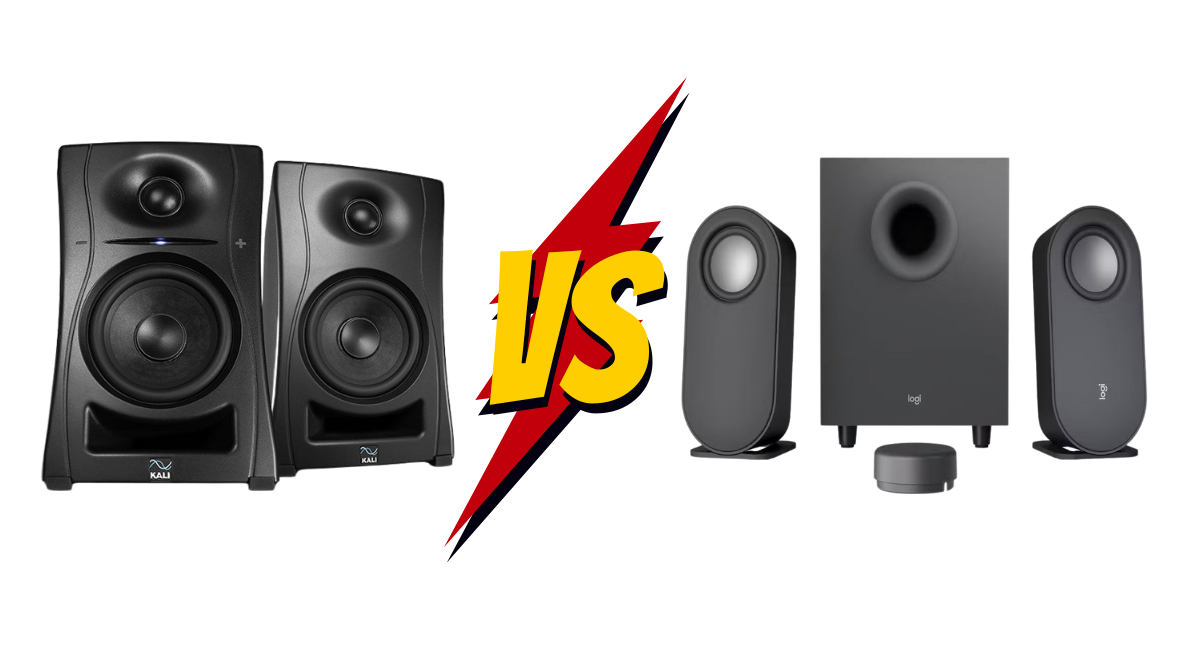Last Updated on March 19, 2025 by Muisc Pro Editorial Team
If you’ve had the privilege of walking into a decent studio, you’d have noticed that their sound is next level and in a whole different world. Woooaahh….what gives?
The audio that a studio produces is incomparable to even the top home sound systems.
The reason? Studio monitors!
These high-tech gadgets look similar to regular speakers, but they are a world apart. Studio monitors are designed for razor-sharp precision and a flat frequency response, allowing you to hear every detail of the audio, while regular speakers are meant for casual listening, often enhancing sound by boosting bass and treble to make music more enjoyable.
So what’s the difference? We’ll look at studio monitors vs regular speakers, exploring stuff like the purpose, sound characteristics, and technical specs of each one. For a deeper dive into top options, refer to the best studio monitor reviews to find the perfect fit for your setup.
Purpose and Design
Studio monitors are designed for critical tasks such as recording, mixing, and mastering. Their primary objective is to deliver an accurate, uncoloured sound with a flat frequency response. They emphasize transparency while revealing every nuance or flaw in the audio. You’ll find monitors in recording studios, used by audio professionals to ensure their content sounds great across the numerous playback systems.
On the other hand, regular speakers are designed to entertain us. We use them in home theatre systems, to listen to music, or at parties where the listening experience is key. Speakers often boost bass, treble, or midrange frequencies to modify and enhance the original content for listening pleasure.
While studio monitors are designed for function and precision, speakers are meant for enjoyment.
Sound Characteristics

The sound characteristics couldn’t be more different, especially for the trained ear. Studio monitors should deliver a flat frequency response, producing sound as close to the original recording as possible. For example, the Yamaha HS8 boasts a frequency range of 38 Hz to 30,000 Hz, maintaining a relatively flat response for accuracy.
Regular speakers boost bass and treble for an enhanced listening experience, modifying the original content to create a punchier, more balanced sound that’s perfect for casual listening but is inaccurate.
Studio monitors prioritize neutrality, making them ideal for spotting mix imperfections, while regular speakers enhance frequencies, masking flaws but boosting enjoyment.
Studio Monitors also offer precise stereo imaging and a wide sweet spot, ensuring clear separation of instruments and vocals for critical listening. Regular Speakers may not have the same level of detailed imaging, often blending sounds to create a more consumer-friendly experience.
Monitors also excel in low distortion and high fidelity across volumes, crucial for production, whereas regular speakers might distort at higher levels, a trade-off less noticeable in entertainment settings.
Technical Specifications

Studio monitors are usually active with bi-amplified or tri-amplified designs, where separate amplifiers power the woofer and tweeter for better control and clarity. Enclosures are designed to minimize resonance and distortion, often made from dense materials like MDF (Medium-Density Fiberboard).
Speakers are often passive and rely on external amps. Passive setups use a single amp, which can reduce accuracy, a common characteristic of traditional hi-fi systems. Enclosures may not be as acoustically optimized, potentially introducing resonance or distortion.
Studio monitors also employ active crossovers, which split frequencies before amplification, leading to cleaner driver separation. Speakers usually use passive crossovers post-amplification, which may lead to some precision loss.
Studio monitors are engineered to provide a precise stereo image, allowing users to pinpoint the location of instruments and sounds in the mix. Speakers often have a wider but less accurate stereo field, designed to fill a room with sound rather than provide detailed imaging.
Listening Environment and Range

The listening environment of studio monitors and speakers vary slightly. Monitors are usually nearfield and optimized for distances of 30 to 120cm, which will deliver direct sound with minimal interference. Speakers are more midfield and farfield designs that can fill larger spaces like living rooms or halls.
Monitors demand acoustic treatment to handle room reflections, whereas regular speakers are more forgiving, thriving in untreated spaces and making them versatile for home use.
Monitors also have a narrow sweet spot, ensuring precision for a single listener, while regular speakers offer a wider sweet spot, accommodating multiple people.
Applications and Use
You wouldn’t want to use monitors and speakers interchangeably, as they serve different functions. Monitors are used primarily in music production, mixing, mastering, and film scoring, where precision is of utmost importance. Sound engineers use them to produce the perfect audio content, especially in professional work.
Speakers are used for casual listening experiences such as in home theatre systems, gaming, music, and parties. The listener’s enjoyment is more important than precision, which is why speakers often modify and boost bass and treble.
Can you use them in place of each other? Sure, but studio monitors might sound too flat or dry for entertainment, and regular speakers could be inaccurate, leading to flawed mixes as they will mask imperfections.
Durability
Monitors and speakers serve different functions, and there are a wide range of models ranging from the budget-friendly to the top-of-the-line. These would naturally have an impact on the durability and quality of each one.
However, as a general rule, studio monitors feature robust construction to withstand high volumes and sudden transients, like unmastered audio bursts, with a utilitarian design focused on performance over looks. Regular speakers vary widely, from budget Bluetooth models to premium hi-fi systems, often emphasizing sleek finishes or compact sizes.
While monitors are built for durability in demanding studio conditions, regular speakers might not hold up as well under professional rigor, aligning with their casual focus.
Cost and Accessibility
As mentioned, they serve different functions, and monitor and speaker models come in at all sorts of price points. Studio monitors more often serve audio professionals and can cost anything between $200 to over $10,000 a pair, catering to casual hobby producers to professionals alike.
Regular speakers can cost a mere $10 for a simple Bluetooth unit and shoot skywards towards the $10,000 audiophile systems that are the indulgence of a few.
Setup and Configuration

Both monitors and speakers differ slightly in terms of setup and configuration. Monitors need more careful studio monitor placement and should form an equilateral triangle with your listening position. You can also add acoustic treatment and tuning options like EQ switches and pro-grade XLR or TRS inputs.
Regular speakers are simpler, needing minimal positioning effort and featuring consumer-friendly connections like RCA, Bluetooth, or AUX, with basic controls at most.
Monitors demand more setup effort for pros, while regular speakers keep it beginner-friendly.
Aesthetics

Studio monitors aren’t built for pure aesthetics and usually feature a functional, boxy look with exposed drivers. Monitors are used for precision and performance rather than style.
Regular speakers, especially the high-end ones, are designed to be aesthetically pleasing and often feature quality finishings such as wood or slim profiles. They can blend seamlessly into your home or office decor, ranging from compact, portable units to elegant floorstanders.
So Which Should You Pick?
When it comes to studio monitors vs regular speakers, it isn’t a ‘one is better than the other’ type of situation as both of them serve vastly different functions.
Audio professionals, sound engineers, and producers will need studio monitors for accurate mixing and mastering with precision as the primary driving force. Regular speakers will suit casual listeners are audiophiles that are seeking an incredible, enhanced audio experience that prioritizes enjoyment over accuracy.

